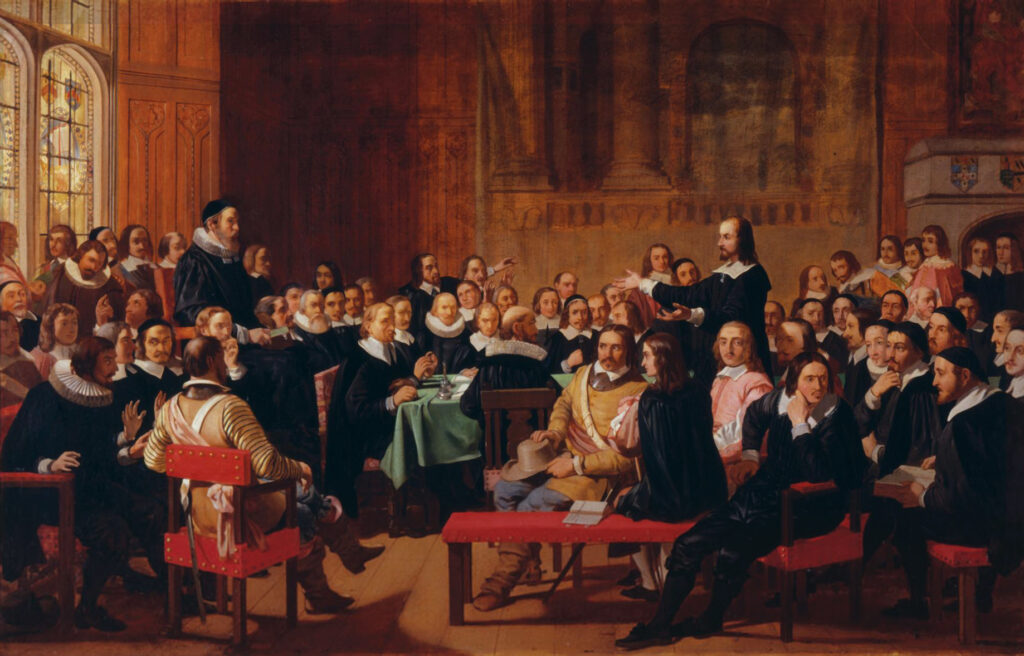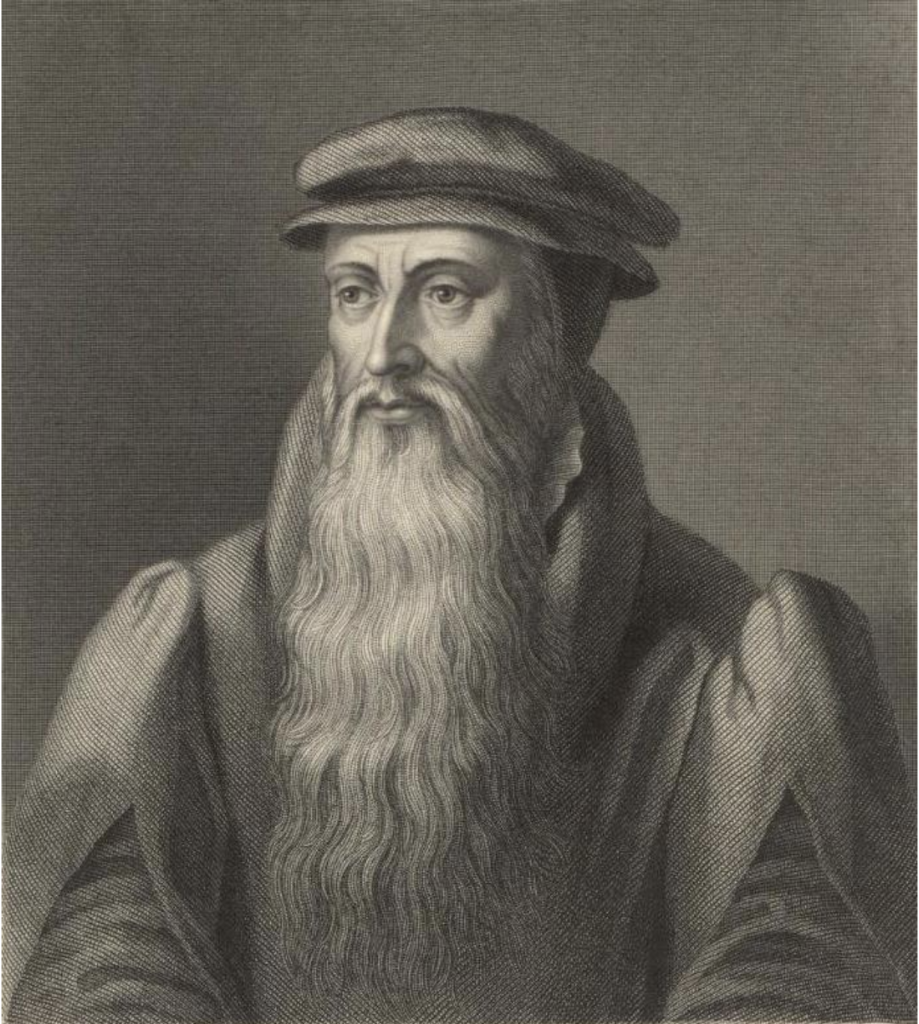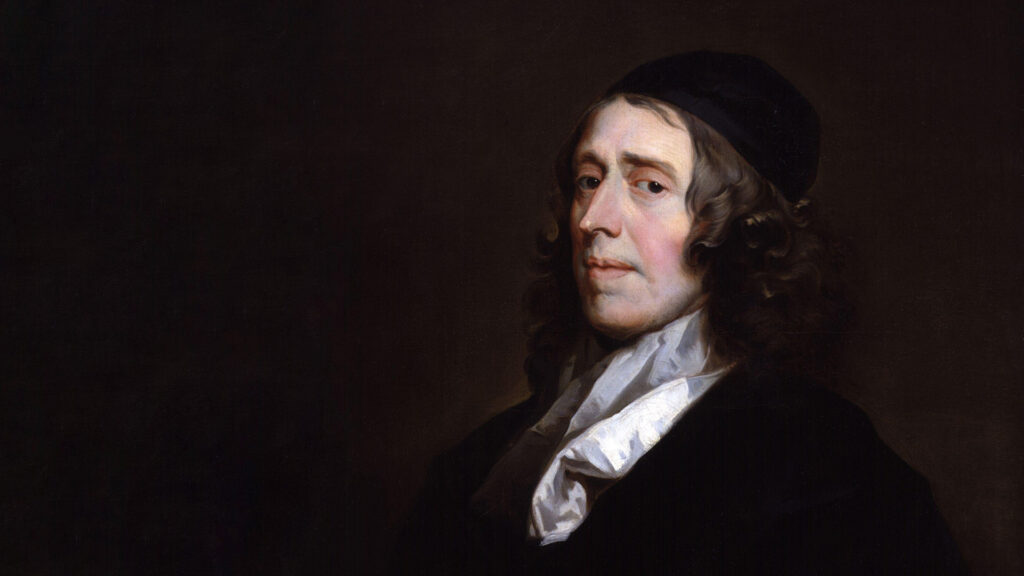
As a reformed presbyterian minister, the history of the Protestant Reformation (particularly the written summaries of biblical doctrine) interests me. Nonetheless, I am not merely interested in history and ancient documents for their own sake. Rather, Reformed creeds and confessions intrigue me because they contained summaries of the gospel of Jesus Christ for which the men judged “worth dying for.” In those days, men were asked to submit to tyranny of conscience and renounce their biblical convictions. They would not do so because they knew that truth matters! And the eternal truths that they confessed and bled for abide today. In a world of fake news and relativism in our societies and ambiguity in our churches, we are starved for truth-The Truth. We are a generation that has fed upon godless falsehoods. Today, many educated men and women cannot even articulate truthful answers to simple questions like “What is a woman?” Dear blog reader, I submit to you that the truth of the reformed creeds and confessions of prior generations for which the men of prior centuries died are precisely what a generation who is dying to live needs.
This post is intended to be a “Cheat sheet” to the history of reformed creeds. Our church has been discussing what it means to be reformed in our Sunday school class. In short, reformed churches hold to the doctrines of the scriptures which have been joyfully formulated and tested throughout the history of the church. We are aligned with the Alliance of Confessing Evangelicals and affirm the pithy five solas of the Protestant Reformation (Sola Scriptura, Sola Gratia, Sola Fides, Solus Christus, Soli Deo gloria).
This post will chronologically take us through a 30,000 feet overview of some of the most significant post-reformation documents (creeds, confessions, and catechisms) produced by the reformed churches with three main headings:
Lutheran-the early period of the reformation dominated by Martin Luther’s teaching.
Evangelical Reformed-the middle period of the reformation dominated by the teaching of Geneva and John Calvin.
Later Protestant-a later period with some adopting a more individualized application of Calvinistic principles and the reformation.
While our church’s officers hold to the Westminster Standards, we find all of these to be helpful guides for the church.
All believers should acknowledge the documents summarized below as significant. We must not be ignorant that many saints gave their lives in defense of the doctrine. We remember that we called to take up our cross and follow Christ, no matter where the Good Shepherd leads us. We must remember that the New Testament Epistles tell the church to guard the faith once delivered (Jude 3), and we commend these documents as useful to that end for individuals, church sessions, presbyteries, synods, and assemblies.
Lutheran Confessions:

Augsburg Confession, 1530- Written by Phillip Melanchthon and is the primary document in the Lutheran creed book known as the Book of Concord. Click here to read it.
Luther’s Small Catechism, 1529- This is a basic summary of Christian doctrine for laity and pastors. See Martin Luther’s explanation for why he produced it,
“Dear God, what misery I beheld! The ordinary person, especially in the villages, knows absolutely nothing about the Christian faith, and unfortunately many pastors are completely unskilled and incompetent teachers. Yet supposedly they all bear the name Christian, are baptized, and receive the holy sacrament, even though they do not know the Lord’s Prayer, the Creed, or the Ten Commandments!”
I fear Martin could of just as easily have said the same about Oklahoma in the 21st century! You can read it here.
The Formula of Concord, 1577. This is the final book in the Lutheran collection known as the Book of Concord. Luther and Melanchthon had died decades before, so the primary authors were Chemnitz, Selnecker, and Andrea. This was written to uphold purer Lutheranism against the synergism introduced in Melancththon’s later years. You can read it here.
Evangelical Reformed Churches:

The 1st Helvetic (Swiss) Confession, 1536, authored by four men, including Heinrich Bullinger and Martin Bucer, drawn up in Basel. It was an early reformed confession seeking to bring together Lutherans and Calvinists. Martin Luther rejected it due to its view of the Lord’s Supper. Read it here.
The 2nd Helvetic (Swiss) Confession, 1566, included an expansion of the original written by Bullinger and approved of by Peter Martyr Vermigli. One church historian, John Leith, writes, “It is moderate in tone, catholic in outlook, and closely related to Xn experience. . .. On the other hand it lacks the precision of the Belgic or Westminster Confessions. One interesting aspect of the creed is the attention that is given to worship, church order, especially the ministry, and the ordering of life and marriage.” One problematic issue is that Chapter 11 affirms the perpetual virginity of Mary. You can read it here.
The Heidelberg Catechism, 1563, also known as the Palatinate Catechism, named after a region in present day, southern Germany. Zacharias Ursinus was the primary author and a theology professor at Heidelberg University. Shortly after it was published, the questions were divided into 52 Lord’s Days for preaching purposes. Every Christian should be familiar with this catechism and its heart-warming formulations of God’s grace. You can read it here.
The French (Gallican) Confession, 1559, The Huguenots were persecuted by the Roman Catholic church off and on from 1530s-1789 (French Revolution). Thousands were massacred for holding to the doctrines contained in this confession. The Huguenots commissioned John Calvin to write this confession. You can read it here.
The Belgic Confession, 1561. Belgic was a name for the “Low Countries” which included modern day Belgium and Netherlands. This arose in the time period of the Spanish Inquisition when nearly 100,000 Protestants were martyred in this area, including the main author, Guido de Bres. De Bres sent it with a letter to the king (Philip II) indicating that these Calvinistic Protestants would follow a lawful government, but would not deny Christ or this confession and would instead “offer their backs to stripes, their tongues to knives, their mouths to gags, and their whole bodies to the fire, well knowing that those who follow Christ must take his cross and deny themselves.” You can read it here.
The 1st Scotch Confession, 1560, following the death of “Bloody Mary” and the departure of the French, Scotland organized the “Reformed Church of Scotland” with this confession written by John Knox and 5 other ministers. The preface reads, “Long have we thirsted, dear brothers, to have notified the World the sum of that doctrine which we profess.” The confession ends with, “Arise, O Lord, and let thine enemies be confounded; let them flee from thy presence that hate thy godly name. Give thy servants strength to speak thy Word with boldness, and let all nations cleave to the true knowledge of thee. Amen.” You can read it here.

The 39 Articles of The Church of England, 1563, 1571- Thomas Cranmer’s Forty-Two Articles (1553) were his attempt to respond to the Council of Trent. The 42 were adapted later in 1563 and adopted by the Church of England in 1571 to become the 39 Articles. The document has an Anglo-Catholic tone. Prior to the document’s final composition, Cranmer was burned at the stake by Mary I. The Episcopal Church in the USA approved them with minor alterations in 1801. It presented an Erastian view of church government as the King of England was “Supreme Head on earth of the Church of England.” You can read it here.
The Lambeth Articles, 1595, This document includes nine short articles written by bishops of the Church of England to affirm a Calvinistic view of predestination. Predestination has been much maligned by many modern churches as a “horrible” doctrine, but on the other hand, as you can see by the consensus of theologians in these documents, the doctrine of predestination has warmed the hearts of countless saints (including the author of this blog post!). The Lambeth Articles were rejected by the queen but were adopted by the Church of Ireland when it formed in 1615. You can read them here.
The Irish Articles, 1615. Written primarily by James Ussher. The Church of Ireland did not adopt the 39 Articles of the Church of England. Instead, The Irish Articles became the standard of the Church of Ireland when they were adopted at her first convocation. This confession, more than any other reformed confession, was used by the Westminster Divines prior to their writing the Westminster Confession of Faith. The Irish church, strongly Calvinistic, was very strong and led to the founding of Trinity College in Dublin, 1591, for the training of ministers in the Church of Ireland. It was battered due to its reformed theology by persecution from the government which led to the English Civil War. You can read them here.
The Canons of the Synod of Dort, 1619, led by Francis Gomarus, the Canons were a response to the Remonstrance Articles/Five Arminian Articles (1610), which summarized the theology of Jacob Arminius, a pastor in Amsterdam and professor at the University of Leiden, and some of his later followers including Simon Episcopius and Hugo Grotius. The Remonstrance Articles were written to the government requesting full toleration of their views. Jacob Arminius was theologically very similar to a Wesleyan Arminian, except for perseverance and perfection. While Arminius rejected Calvinistic soteriology, he was closer to orthodox than many of his followers. Dort is short for the name of the city where the Synod was held. The Synod had 84 commissioners and was truly international. 58 were Dutch (the host country) but all foreign reformed churches (England, Scotland, Palatinate, Swiss, Geneva) were invited to send three or four delegates. From the Canons of Dort, we derive the modern-day TULIP acronym. The headings of the document concern Unconditional Election, Limited Atonement, Total Depravity, Irresistible Grace, and Perseverance of the Saints. You can read them here.
The Westminster Confession of Faith & Larger & Shorter Catechisms, 1647. This is the greatest of the reformed confessions. It is part of the constitutional standards of the Associate Reformed Presbyterian Church. The Westminster Assembly (met at Westminster Abbey) held 1163 sessions from 1643-1649 with an average attendance of 60-80. The July 1643 Assembly included 121 Divines, 10 laymen, and 20 members of the House of Commons. After the Solemn League and Covenant, a small number, but very influential, of Scottish “Commissioners” were added. All of the Assembly were Reformed. A dozen of the members had already published catechisms that were in wide usage. The Church of England had no church government or required liturgy, so the divines were tasked by a bill of Parliament
“To confer and treat among themselves of such matters and things, touching and concerning the Liturgy, Discipline, and Government of the Church of England, or the vindicating and clearing of the doctrine of the same [39 Articles] from all false aspersions and misconstructions, as shall be proposed unto them by both or either the said Houses of Parliament, and no other; and to deliver their opinions and advices of, or touching the matters aforesaid, as shall be most agreeable to the word of God, to both or either of the said Houses.”
Following the Solemn League and Covenant (1643), Parliament, in agreement with Scotland, wanted the Assembly to “advise” Parliament by providing a revision of doctrine (Reformed), church government (Presbyterian), and worship (Reformed/Puritan) for primarily the Church of England so that she and the Church of Scotland could agree and thus have a uniformity of religion in Britain. The documents of the assembly would be adopted by the Church of Scotland and the Presbyterian churches in the USA. You can read them here.
Other Later Protestant Confessions:

The Savoy Declaration, 1658, English Congregationalist (Independent) Churches commissioned six men led by Thomas Goodwin and John Owen to draw up a confession similar to the Westminster Confession of Faith. It modifies the portion on church government and adds a couple of chapters but is mostly faithful to reproduce the doctrine of the Westminster Confession. You can read it here.
Second London (Baptist) Confession, 1689. Following the Act of Toleration by Parliament, this confession, originally written in 1677, was adopted by the “Particular” Baptists who had Calvinistic soteriology, in contrast to the “General” Baptists. It would later by adopted with minor modifications by the Calvinistic American Baptists in Philadelphia in 1742. It was largely a reproduction of the Savoy Declaration and the Westminster Confession of Faith with modifications on baptism and church government. You can read it here.
As the planter of one of the first reformed churches in Oklahoma and the 1st ARP church in Oklahoma, I am used to being considered as weird or novel by many Christians, but as you can see from the resources above, the churches throughout the world and throughout the centuries have embraced the reformed faith. Modern America ecclesial antagonism to reformed theology and embrace of semi-Pelagianism is the exception to the rule and have done our children no favors. If you’d like an app for your phone with many of the creeds and confessions and scripture references, check out Reformed Companion here.
If you are in Central Oklahoma and would like to grow in the grace and knowledge of the Lord Jesus Christ and study and learn more about Reformed theology with us, please join us for worship, our discipleship courses, our bible studies, or our annual Covenant Theology Conference. You cann request more info here.



